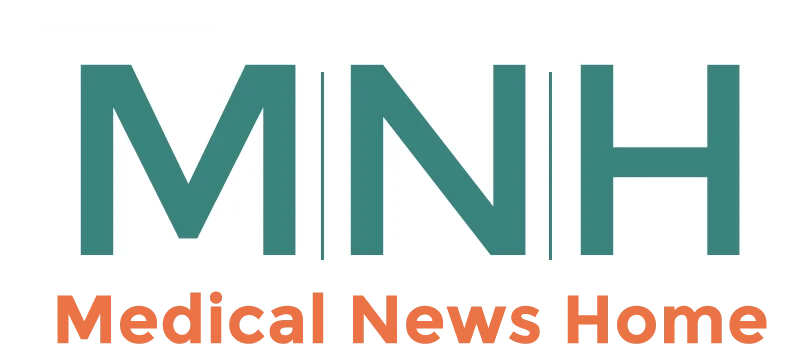Data Interoperability in Healthcare: Breaking Down Silos for Seamless Integration
- Updated on: May 7, 2025
- Published on Jul 10, 2023

The healthcare industry generates vast amounts of data, but often this data is fragmented and locked within separate systems, leading to inefficiencies and missed opportunities for improving patient care. Data interoperability aims to break down these silos by enabling seamless integration and exchange of data across healthcare organizations. This article delves into the concept of data interoperability in healthcare and explores its benefits, implementation strategies, case studies, future trends, challenges, and limitations.
Understanding Data Interoperability
What is Data Interoperability?
Data interoperability refers to the ability of different healthcare systems and applications to exchange, interpret, and use data seamlessly. It involves the standardization of data formats, protocols, and terminologies to ensure that information can be shared accurately and efficiently.
Importance of Data Interoperability
Data interoperability plays a crucial role in improving healthcare outcomes. By breaking down data silos, healthcare providers can access comprehensive patient information, leading to better-informed decisions, reduced errors, and improved coordination of care.
Silos in Healthcare
Definition of Silos in Healthcare
In healthcare, silos refer to isolated systems or departments that store and manage data independently, hindering efficient data exchange and collaboration. Silos can exist between different healthcare facilities, departments within a single organization, or even between different software applications.
Challenges of Silos in Healthcare
Silos create several challenges in healthcare, including fragmented patient records, duplication of tests and procedures, increased costs, and limited interoperability between systems. These challenges impede the delivery of efficient and patient-centered care.
Breaking Down Silos
Data Integration
Data integration involves combining and merging data from different sources to create a unified and comprehensive view. It enables healthcare providers to access a patient’s complete medical history and relevant information in real-time, regardless of the source or system it resides in.
Standardization of Data
Standardizing data formats, codes, and terminologies is vital for effective data interoperability. Adopting industry-wide standards ensures that data can be accurately understood and shared across various healthcare systems.
Interoperability Frameworks
Interoperability frameworks provide guidelines and technical specifications for achieving seamless data exchange. These frameworks facilitate the development of interoperable healthcare systems and support the integration of data across different platforms.
Interoperability Initiatives
Numerous interoperability initiatives have emerged to address the challenges of silos in healthcare. These initiatives focus on promoting data exchange standards, interoperability testing, and the development of interoperable solutions.
Benefits of Data Interoperability in Healthcare
Improved Patient Care
Data interoperability enables healthcare providers to access complete and up-to-date patient information, leading to more accurate diagnoses, improved treatment decisions, and enhanced patient safety.
Enhanced Decision Making
With data interoperability, healthcare organizations can aggregate and analyze data from multiple sources, empowering them to make data-driven decisions, identify trends, and improve population health management.
Efficient Healthcare Operations
Seamless integration of data eliminates redundant data entry, reduces administrative burden, and streamlines workflows. This efficiency translates into cost savings and more time for healthcare providers to focus on patient care.
Implementing Data Interoperability in Healthcare
Technical Considerations
Implementing data interoperability requires a robust technical infrastructure capable of securely exchanging and storing data. Health information exchange platforms, interoperability standards, and secure messaging protocols are essential components of a successful implementation.
Privacy and Security
Protecting patient privacy and ensuring data security are critical considerations in data interoperability. Implementing stringent privacy controls, encryption mechanisms, and access controls is vital to maintain patient confidentiality and prevent data breaches.
Legal and Ethical Considerations
Data interoperability involves sharing sensitive patient information, which raises legal and ethical considerations. Complying with relevant regulations, such as HIPAA, and obtaining patient consent for data sharing are essential to maintain ethical practices.
Case Studies
Case Study 1: Electronic Health Records Integration
This case study explores how a healthcare system successfully integrated electronic health records (EHRs) across multiple facilities. It highlights the benefits of EHR interoperability, improved care coordination, and enhanced patient experiences.
Case Study 2: Health Information Exchange Networks
This case study focuses on a health information exchange network that connects various healthcare organizations. It demonstrates the positive impact of data interoperability on care transitions, medication reconciliation, and public health surveillance.
Future Trends of Data Interoperability in Healthcare
Blockchain Technology
Blockchain technology has the potential to revolutionize data interoperability in healthcare. Its decentralized and immutable nature can ensure secure and transparent data exchange, while also addressing privacy concerns.
Artificial Intelligence
Artificial intelligence (AI) can leverage interoperable data to enable predictive analytics, clinical decision support, and personalized medicine. AI algorithms can analyze vast amounts of data to identify patterns, predict outcomes, and improve healthcare delivery.
Internet of Things
The Internet of Things (IoT) can play a significant role in data interoperability by connecting various devices and sensors. Remote monitoring and proactive interventions are made possible by the ability of IoT devices to collect real-time patient data and transfer it to healthcare systems without interruption.
Challenges and Limitations of Data Interoperability in Healthcare
Interoperability Standards
The lack of universally adopted interoperability standards remains a significant challenge. Diverse standards and varying implementation approaches hinder seamless data exchange and integration across healthcare systems.
Data Governance
Effective data governance is crucial for successful data interoperability. Establishing clear policies, responsibilities, and data quality standards are essential to ensure data accuracy, integrity, and appropriate use.
Funding and Resources
Implementing data interoperability requires substantial financial resources and technical expertise. Limited funding and a shortage of skilled professionals pose challenges to organizations aiming to achieve seamless data integration.
Conclusion
Data interoperability in healthcare holds immense potential for improving patient care, enhancing decision-making, and streamlining healthcare operations. By breaking down silos and implementing robust interoperability frameworks, healthcare organizations can unlock the full value of their data. However, challenges related to standards, data governance, and resources must be addressed to realize the full benefits of data interoperability. Embracing emerging technologies and collaborative initiatives will pave the way for a more connected and efficient healthcare ecosystem.


